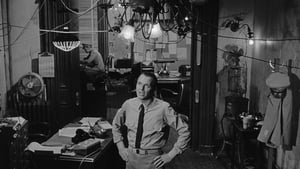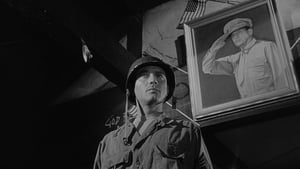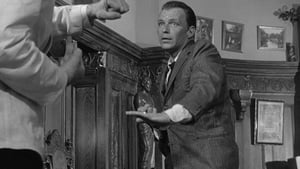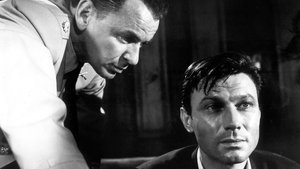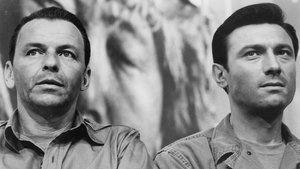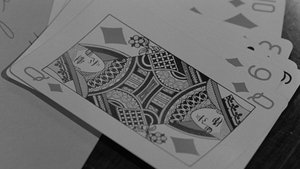Contact: [email protected]
Video Sources 0 Views
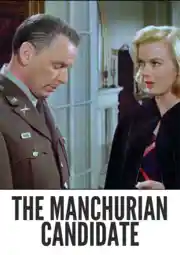
Synopsis
[ez-toc]





Introduction
In the vast expanse of cinematic history, certain films stand as timeless relics of storytelling brilliance. Among these gems is “The Manchurian Candidate Colorized,” a political thriller that captivated audiences in 1962 with its gripping narrative and stellar performances. Fast forward to the present, where the magic of technology has bestowed upon us a colorized version of this classic, breathing new life into its narrative. This article delves into the fascinating journey of “The Manchurian Candidate Colorized 1962,” exploring the delicate balance between preserving cinematic heritage and embracing modern advancements.
Read Media File Transfer Agreement: Terms and Conditions
Read FAQ
The Evolution of Colorization in the Film Industry
The inception of colorization marked a pivotal moment in the film industry’s quest to revitalize old movies. Early techniques involved hand-painting frames, a labor-intensive process with mixed results. Controversies arose as purists argued against tampering with the original black and white aesthetic. However, technological strides have refined colorization, making it more nuanced and respectful of the filmmaker’s vision.
Colorization, once a contentious practice, has evolved into a sophisticated art form, blending traditional craftsmanship with cutting-edge technology. The ability to breathe vibrant colors into classic films has not only opened avenues for rediscovery but has also sparked a conversation about the role of technology in preserving cinematic history.
Reviving “The Manchurian Candidate Colorized” Through Colorization and Restoration
“The Manchurian Candidate Colorized,” directed by John Frankenheimer, emerged during a tumultuous period in American history, reflecting the anxieties of the Cold War era. Starring Frank Sinatra as Captain Bennett Marco and Angela Lansbury as the enigmatic Mrs. Iselin, the film became a landmark in political thrillers. Now, decades later, this cinematic masterpiece has undergone a transformation with the infusion of vibrant colors.
The importance of vibrant colors in enhancing the storytelling cannot be overstated. The original cinematography, expertly crafted in black and white, conveyed a certain mood and atmosphere integral to the narrative. The colorization process, undertaken with meticulous care, aimed not to replace the original but to complement and amplify its impact. Advanced technology played a crucial role in this restoration, ensuring that the colorized version stayed true to the essence of the 1962 classic.
Examining the Impact: Original vs. Colorized Version
Colorization, a double-edged sword, raises questions about authenticity and viewer experience. While some argue that it brings classic films to a modern audience, others contend that it alters the intended emotional impact. As we explore “The Manchurian Candidate Colorized 1962,” we dissect the benefits and potential drawbacks, seeking to understand how colorization influences our perception of the narrative.
The infusion of color adds a layer of richness to the film, providing a visual experience that resonates with contemporary audiences. However, purists may argue that the original black and white presentation holds a certain charm and authenticity that should be preserved. Striking a balance between preservation and adaptation becomes crucial, acknowledging the historical context while making films accessible to new generations.
1. The Manchurian Candidate Colorized 1962: Plot and Characters
Entering the heart of the matter, let’s revisit the gripping plot of “The Manchurian Candidate Colorized.” The film follows Captain Bennett Marco, portrayed by the iconic Frank Sinatra, as he unravels a sinister conspiracy involving brainwashing and political manipulation. With the colorized version, the plot gains a renewed visual dimension, and the characters, including Angela Lansbury’s memorable portrayal of Mrs. Iselin, shine in a spectrum of vibrant hues.
The colorization process brings a new perspective to character dynamics and emotional nuances. Sinatra’s expressions, previously conveyed in shades of gray, now evoke a vivid range of emotions. The transformation of the film’s visual palette does not diminish its impact but rather enhances the audience’s connection with the characters and the unfolding narrative.
2. Revisiting the Critical Reception and Awards of “The Manchurian Candidate Colorized” 1962
Upon its original release, “The Manchurian Candidate Colorized” received critical acclaim for its sharp writing, innovative direction, and stellar performances. Frank Sinatra’s portrayal of a war-weary soldier grappling with the psychological aftermath of his experiences earned him widespread praise. Angela Lansbury’s chilling depiction of a manipulative mother added an extra layer of complexity to the film.
Now, with the colorized version, we explore how contemporary audiences and critics perceive this classic. Did the infusion of color elevate its standing, or did it face skepticism? The critical reception to colorized classics is often polarized, with some praising the revitalization of cinematic treasures, while others express reservations about tampering with the original directorial vision. Additionally, we delve into any award nominations or wins, acknowledging the film’s impact on the cinematic landscape.
The Art and Science Behind Colorizing Old Films
Colorizing a film involves a delicate dance between art and technology. Unveiling the mystery behind the process, we explore the intricate techniques employed in bringing “The Manchurian Candidate Colorized” to life in vivid hues. Digital algorithms, driven by artificial intelligence, play a pivotal role in achieving accurate color representation, ensuring a seamless fusion of classic storytelling and modern visual appeal.
The meticulous attention to detail in the colorization process involves a deep understanding of the original cinematography. Every frame becomes a canvas, with colorists working tirelessly to recreate the intended ambiance. The marriage of art and science is evident as algorithms analyze shades, tones, and lighting to produce a colorized version that pays homage to the director’s vision.
Preserving Cinematic Heritage: The Debate Over Colorization
The debate surrounding colorization hinges on preserving the authenticity of black and white classics versus adapting them for contemporary audiences. As we navigate this discourse, we examine the delicate balance between honoring cinematic heritage and making old films accessible to new generations. “The Manchurian Candidate Colorized 1962” serves as a case study in this ongoing dialogue.
Purists argue that tampering with the original aesthetic compromises the integrity of the filmmaker’s vision. They contend that black and white cinematography carries a unique artistic expression, and colorization may dilute the intended impact. On the other hand, proponents of colorization believe that introducing vibrant hues rejuvenates classic films, making them more relatable to modern audiences.
Restoring the Past: The Role of Technology in Film Preservation
Technological advancements have revolutionized film preservation, with color restoration projects at the forefront. We explore how cutting-edge tools and methodologies have breathed new life into old films, ensuring that the magic of classics endures for generations to come. “The Manchurian Candidate Colorized” stands as a testament to the symbiosis between technology and preserving cinematic history.
Film restoration technology has come a long way since the early days of hand-painting frames. Digital restoration processes, powered by advanced algorithms, have enabled the resurrection of films that were once thought to be lost. The marriage of technology and film preservation ensures that future generations can experience the cinematic brilliance of bygone eras in its full glory.
The Manchurian Candidate Colorized 1962 Through Viewers’ Eyes
To gauge the impact of colorization, we turn to the viewers themselves. Their opinions, diverse and subjective, provide valuable insights into the success or challenges faced by “The Manchurian Candidate Colorized 1962.” From purists cherishing the original to newcomers embracing the vibrancy of color, we compile a mosaic of perspectives that reflects the varied tapestry of audience reception.
Viewers often have a personal connection with classic films, and any alteration to the visual presentation can evoke strong reactions. Interviews and online forums reveal a spectrum of opinions, from those who appreciate the revitalization of old favorites to others who express reservations about tampering with cinematic history. The audience’s perspective adds a human touch to the debate over the role of colorization in preserving film heritage.
Unveiling the Colors: Behind the Scenes of “The Manchurian Candidate Colorized” Restoration
Embarking on a journey behind the curtain, we unveil the meticulous restoration process undertaken for “The Manchurian Candidate Colorized 1962.” From digital remastering to color grading, every step is a homage to the artistry of the original creators. This section offers readers a glimpse into the dedication and expertise required to breathe new life into a cinematic classic.
The restoration process involves collaboration between skilled technicians, colorists, and preservationists. Digital tools aid in cleaning and enhancing the film’s visual and auditory elements. Interviews with those involved in the restoration provide an intimate look at the passion and commitment required to ensure that the colorized version remains faithful to the essence of the 1962 classic.
Preserving the Past, Embracing the Future: The Role of Colorization in Film Heritage
As we near the conclusion, we ponder the future of colorization in preserving film heritage. Is it a sacrilege or a celebration? We examine how colorization can be viewed as a form of homage, keeping classic films relevant in the digital age. “The Manchurian Candidate Colorized 1962” symbolizes the bridge between past and future, inviting audiences to appreciate the richness of cinematic history through a contemporary lens.
Colorization can be seen as a dynamic tool to bridge generational gaps, allowing younger audiences to engage with cinematic classics in a visually appealing manner. The debate over whether to preserve films in their original black and white format or adapt them through colorization is likely to persist. However, as technology advances, colorization may become an increasingly accepted method of preserving and reintroducing classic films to a broader audience.
Conclusion
In conclusion, “The Manchurian Candidate Colorized 1962” stands as a testament to the transformative power of technology in the world of cinema. The delicate dance between preserving the past and embracing the future is exemplified in the vibrant hues that now grace this Cold War classic. As technology continues to evolve, let us appreciate both the original and colorized versions of such cinematic treasures, recognizing them as distinct yet interconnected threads in the rich tapestry of film history.
The infusion of vibrant colors breathes new life into the narrative, offering audiences a fresh perspective on a familiar masterpiece. The debates surrounding colorization may persist, but as we navigate the evolving landscape of film preservation, one thing remains clear – technology has the power to honor the past while propelling classic films into the future. So, whether you choose to revel in the timeless black and white elegance of the original or embrace the vivid hues of the colorized version, “The Manchurian Candidate Colorized 1962” invites you to experience its brilliance anew, bridging the gap between cinematic nostalgia and modern innovation.
